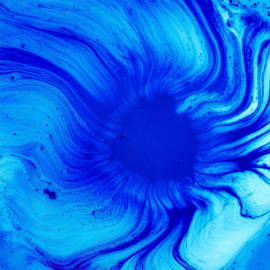Metaphysics, translated from the English term “Metaphysics,” is derived from the combination of two words: “Meta” and “Physics.” The former is translated as “元” (Yuan), and the latter as “物理学” (Physics). Its origins can be traced back to over 300 years BC when it was used by Aristotle. He referred to Metaphysics as the first philosophy and the first science. Philosophy, apart from being considered the mother of all sciences by Aristotle, has also gained recognition from mainstream scientists, including Einstein.
It is said that the Chinese translation of “Metaphysics” as “形而上学” (Xing Er Shang Xue) was coined by the renowned Japanese philosopher Tetsujiro Inoue during the Meiji era. He based it on a quote from the “Yi Jing” (Book of Changes) which states, “形而上者谓之道,形而下者谓之器” (The Dao is formless, while the objects are formed). This translation is still widely accepted and used today.
Comparatively, I prefer translating it as “元学” (Yuan Xue) or “玄学” (Xuan Xue). This is because “元” (Yuan) in Chinese represents fundamental or basic aspects, primary or first elements, and the first or foremost. “元” can also be referred to as “宇宙元” (Metaverse). Read more…
In English, “Meta” is a prefix or preposition that denotes a sense of change. For example, “Metamorphose” means transformation or change in form, and “Metabolism” refers to the process of metabolism. These terms are closer to the meaning of “元” (Yuan) or “玄” (Xuan) signifying transformation or mystery. The Chinese culture often uses “玄” (Xuan) to express mysterious things. Therefore, I believe translating Metaphysics as “元学” (Yuan Xue) or “玄学” (Xuan Xue) is more concise and appropriate. Both terms complement each other.
I believe it is time to translate “Metaphysics” as “元学” (Yuan Xue) and give it a proper name. If there are predecessors who have done so, I apologize for my ignorance. Before the translation of “Metaphysics” as “元学” (Yuan Xue) becomes widely accepted, I will continue to use “元学” (Yuan Xue), “玄学” (Xuan Xue), and “形而上学” (Xing Er Shang Xue) interchangeably.
In the Book of Changes, it is stated: “The Dao is formless, while the objects are formed.” Zhu Xi explained it as “The formless refers to the intangible and imperceptible principle, while the former refers to the tangible and observable objects.”
In simple terms, the visible things, such as our material world, belong to the “formed” category, while the invisible but existent things, such as the meridians, chakras, and consciousness of humans, belong to the “formless” category.
Metaphysics is a multidimensional and holistic understanding of universal scientific knowledge. The Akashic Records can be considered the archives of the universe.
Metaphysics explores the concept of “origin” and studies the attributes and intrinsic nature hidden behind forms. In the realm of time/space or the higher-Density universe, everything is energy. The “formed” refers to the relative aspect in contrast to the “formless.” In the realm of space/time or the material world, it encompasses the tangible, visible, or living aspects. However, matter/life is also a form of energy/substance in different forms.
As Buddha said, “All phenomena are illusory. When you see that all phenomena are not phenomena, then you see the Tathagata.” From the perspective of Huaxinsi, this means that perceiving through the senses of sight, hearing, smell, taste, touch, and thought is illusory, belonging to the conventional truth. However, if One understands that everything in the universe is energy, in the higher-Density space/time, everything is formless. This is the cosmic view, the ultimate truth.
Consciousness determines everything. Read more…
The “spiritual shackle” or “spiritual confinement” is synonymous with terms like “closed-book examination,” “mysterious veil,” “spiritual amnesia,” and “Meng Po’s soup.” Read more…>
… … …
RELATED: God’s Perspective | 3D Perspective





